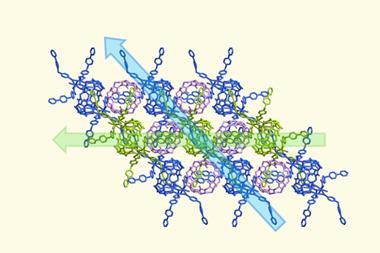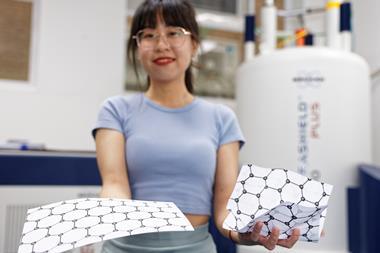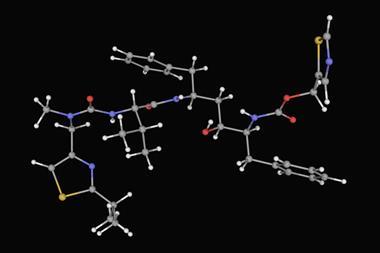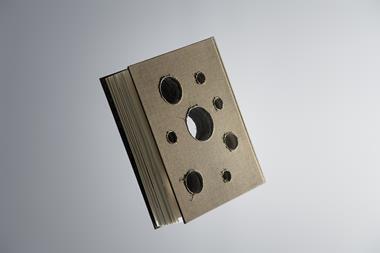Structural disorder brings out desirable but counterintuitive phenomenon in metal–organic framework
Researchers in the UK and France have tuned the properties of a metal–organic framework (MOF) by deliberately engineering defects into its structure.1

Most solids expand on heating. Andrew Goodwin, from the University of Oxford, and colleagues have been tinkering with a hafnium terephthalate MOF that exhibits the opposite – but desirable – property of negative thermal expansion (NTE), so it shrinks on heating. By varying its vacancy defects, the team created a MOF with an NTE effect 10 times stronger than that observed in the benchmark NTE material ZrW2O8.2
Problems caused by thermal expansion are ubiquitous. Everything from structural components, like bridges and train tracks, to precision instruments and electronic devices would benefit from the enhanced reliability and lifespan of zero thermal expansion. This is why scientists are keen to find NTE materials to combine with conventional ones and even each other out.
So as well as synthesising a fascinating material, the researchers hope their work will motivate further research into properties to be gained by intentionally imparting structural disorder into frameworks.
References
- M J Cliffe et al, Phys. Chem. Chem. Phys., 2015, 17, 11586 (DOI: 10.1039/c5cp01307k) (This article is free to access until 4 June 2015.)
- T A Mary et al, Science, 1996, 272, 90 (DOI: 10.1126/science.272.5258.90)















No comments yet